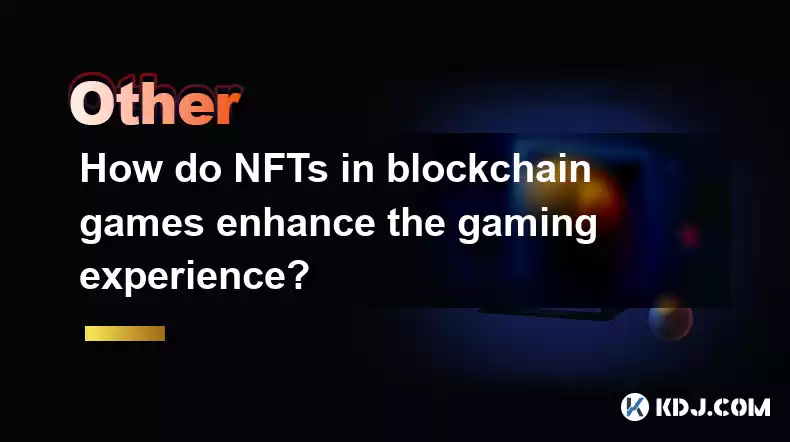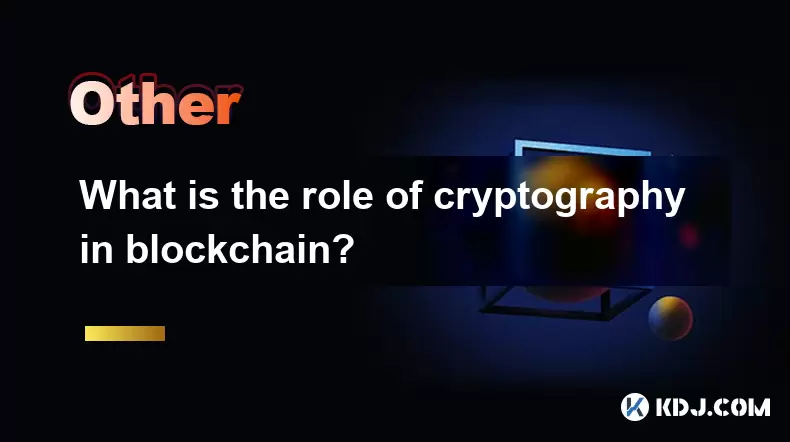-
 Bitcoin
Bitcoin $113600
0.08% -
 Ethereum
Ethereum $3464
-0.62% -
 XRP
XRP $2.859
-3.36% -
 Tether USDt
Tether USDt $0.9999
0.03% -
 BNB
BNB $746.7
-0.69% -
 Solana
Solana $161.1
-1.47% -
 USDC
USDC $0.0000
0.03% -
 TRON
TRON $0.3264
0.03% -
 Dogecoin
Dogecoin $0.1965
-1.08% -
 Cardano
Cardano $0.7232
1.37% -
 Hyperliquid
Hyperliquid $38.56
0.67% -
 Sui
Sui $3.428
-0.53% -
 Stellar
Stellar $0.3804
-0.38% -
 Chainlink
Chainlink $16.05
0.99% -
 Bitcoin Cash
Bitcoin Cash $538.9
0.92% -
 Hedera
Hedera $0.2391
1.17% -
 Ethena USDe
Ethena USDe $1.001
0.03% -
 Avalanche
Avalanche $21.22
-0.76% -
 Toncoin
Toncoin $3.668
2.69% -
 Litecoin
Litecoin $109.8
2.60% -
 UNUS SED LEO
UNUS SED LEO $8.967
0.06% -
 Shiba Inu
Shiba Inu $0.00001210
0.19% -
 Polkadot
Polkadot $3.582
1.35% -
 Uniswap
Uniswap $9.048
1.27% -
 Monero
Monero $300.1
1.23% -
 Dai
Dai $0.0000
0.01% -
 Bitget Token
Bitget Token $4.301
0.18% -
 Pepe
Pepe $0.00001036
-0.51% -
 Cronos
Cronos $0.1305
-0.82% -
 Aave
Aave $256.6
1.47%
How do NFTs in blockchain games enhance the gaming experience?
NFTs enhance blockchain gaming by providing true ownership, boosting player engagement, creating dynamic economies, and ensuring transparency and fairness.
Apr 14, 2025 at 05:56 pm

Non-Fungible Tokens (NFTs) have become a significant part of the blockchain gaming ecosystem, offering unique digital assets that enhance the gaming experience in several ways. By integrating NFTs into games, developers can provide players with true ownership of in-game items, foster a vibrant economy, and create a more engaging and personalized gaming environment. In this article, we will explore how NFTs in blockchain games enhance the gaming experience by delving into their impact on ownership, player engagement, economic systems, and more.
Ownership and Asset Management
One of the most significant ways NFTs enhance the gaming experience is by providing players with true ownership of their in-game assets. Unlike traditional games where in-game items are controlled by the game developers, NFTs on the blockchain allow players to own, trade, and manage their digital assets securely.
- Secure Ownership: NFTs are stored on the blockchain, ensuring that each item has a unique identifier and cannot be duplicated or altered without the owner's consent. This gives players peace of mind knowing that their assets are safe and verifiable.
- Transferability: Players can easily transfer their NFTs to other players or sell them on various marketplaces. This transferability adds a layer of flexibility and freedom that is not available in traditional gaming environments.
- Asset Management: With NFTs, players can manage their digital collections outside of the game, using wallets and other tools to organize, track, and showcase their assets. This level of control over their digital possessions enhances the overall gaming experience.
Player Engagement and Customization
NFTs also enhance the gaming experience by increasing player engagement and offering more opportunities for customization. When players own unique digital assets, they are more likely to invest time and effort into the game, leading to a more immersive and enjoyable experience.
- Personalization: NFTs allow players to customize their characters, items, and environments in ways that are not possible in traditional games. For example, a player might purchase an NFT that is a unique skin for their character, making their avatar stand out in the game world.
- Engagement through Scarcity: The scarcity of certain NFTs can drive player engagement. Limited-edition items or rare assets can become highly sought after, encouraging players to participate more actively in the game to acquire these valuable NFTs.
- Community Building: NFTs can foster a sense of community among players. When players own and trade unique assets, they often form groups and communities around these items, leading to increased social interaction and a more vibrant gaming ecosystem.
Economic Systems and Incentives
The integration of NFTs into blockchain games also enhances the gaming experience by creating robust economic systems and providing players with new incentives to play.
- In-Game Economies: NFTs can be used to create dynamic in-game economies where players can buy, sell, and trade assets. This economic activity can add depth and realism to the game, making it more engaging for players who enjoy economic strategy.
- Earning Opportunities: Many blockchain games reward players with NFTs for their participation and achievements. These rewards can be sold for real-world currency, providing players with a tangible incentive to continue playing and improving their skills.
- Monetization for Developers: For game developers, NFTs offer a new way to monetize their games. By selling unique digital assets, developers can generate additional revenue while providing players with valuable and enjoyable content.
Interoperability and Cross-Game Use
Another way NFTs enhance the gaming experience is through interoperability and the potential for cross-game use. NFTs can be used across different games and platforms, allowing players to take their digital assets with them as they explore new gaming experiences.
- Cross-Game Compatibility: Some NFTs are designed to be compatible with multiple games. For example, a player might use an NFT purchased in one game in another game within the same ecosystem, enhancing the utility and value of the asset.
- Portability: The ability to move NFTs between games and platforms gives players more flexibility and freedom. This portability can lead to a more seamless and enjoyable gaming experience, as players are not locked into a single game or ecosystem.
- Ecosystem Growth: The interoperability of NFTs can help grow the overall blockchain gaming ecosystem. As more games and platforms adopt NFTs, the value and utility of these digital assets increase, benefiting both players and developers.
Transparency and Fairness
Finally, NFTs enhance the gaming experience by promoting transparency and fairness within the game. The use of blockchain technology ensures that all transactions and ownership records are transparent and immutable, reducing the potential for fraud and ensuring a level playing field for all players.
- Transparent Transactions: Every transaction involving an NFT is recorded on the blockchain, making it easy for players to verify the authenticity and history of their assets. This transparency builds trust and confidence in the gaming ecosystem.
- Fair Distribution: NFTs can be used to ensure a fair distribution of in-game items. For example, developers can use smart contracts to distribute rare NFTs through transparent and verifiable processes, ensuring that all players have an equal chance to acquire these valuable assets.
- Reduced Cheating: The immutability of the blockchain makes it difficult for players to cheat or manipulate the system. This leads to a more fair and enjoyable gaming experience, as players can trust that the game is being played on a level playing field.
Frequently Asked Questions
Q: Can NFTs in blockchain games be used in real-world applications outside of gaming?
A: While NFTs are primarily used within the gaming ecosystem, some projects are exploring ways to use NFTs in real-world applications, such as digital art, collectibles, and even real estate. However, these applications are still in the early stages of development and are not yet widely adopted.
Q: How do I know if an NFT in a blockchain game is valuable?
A: The value of an NFT in a blockchain game can be determined by several factors, including its rarity, utility within the game, and demand from other players. You can check the value of an NFT by looking at its price on various marketplaces and by considering its historical sales data and current market trends.
Q: Are there any risks associated with owning NFTs in blockchain games?
A: Yes, there are some risks associated with owning NFTs in blockchain games. These include the potential for scams, the volatility of NFT prices, and the risk of the game or platform shutting down, which could render the NFTs worthless. It's important for players to do their research and understand these risks before investing in NFTs.
Q: Can I create my own NFTs for use in blockchain games?
A: Yes, many blockchain gaming platforms allow players to create their own NFTs. This typically involves using a platform's tools to design and mint the NFT, which can then be used within the game or sold to other players. However, the process can vary depending on the specific platform and game, so it's important to follow the platform's guidelines and instructions.
Disclaimer:info@kdj.com
The information provided is not trading advice. kdj.com does not assume any responsibility for any investments made based on the information provided in this article. Cryptocurrencies are highly volatile and it is highly recommended that you invest with caution after thorough research!
If you believe that the content used on this website infringes your copyright, please contact us immediately (info@kdj.com) and we will delete it promptly.
- SOLF Token vs. BONK: Predicting a $300 Solana in 2025?
- 2025-08-03 16:30:16
- Sei, Injective, and Bitcoin Dominance: Navigating the Crypto Landscape
- 2025-08-03 16:50:15
- UK Lifts Ban on Crypto ETNs: Bitcoin Set for Retail Boom?
- 2025-08-03 16:30:16
- Coin Master Free Spins: Maximize Your Game with Daily Links (August 2025)
- 2025-08-03 16:50:15
- Litecoin's Rocky Road: ETF Uncertainty and Post-Halving Hopes
- 2025-08-03 17:10:16
- Cardano, SpacePay, and the Altcoin Landscape: Navigating Crypto in 2025
- 2025-08-03 17:15:16
Related knowledge

What is the difference between on-chain and off-chain transactions?
Aug 02,2025 at 04:22pm
Understanding On-Chain TransactionsOn-chain transactions refer to digital asset transfers that are recorded directly on a blockchain ledger. These tra...

What is a node's role in a blockchain network?
Aug 03,2025 at 03:16pm
Understanding the Function of a Node in a Blockchain NetworkA node is a fundamental component of any blockchain network, acting as a participant that ...

What is the double-spending problem and how does blockchain prevent it?
Aug 02,2025 at 01:07pm
Understanding the Double-Spending ProblemThe double-spending problem is a fundamental challenge in digital currency systems where the same digital tok...

What is the difference between a blockchain and a database?
Aug 01,2025 at 09:36pm
Understanding the Core Structure of a BlockchainA blockchain is a decentralized digital ledger that records data in a series of immutable blocks linke...

How does blockchain handle scalability?
Aug 02,2025 at 02:58pm
Understanding Blockchain Scalability ChallengesBlockchain scalability refers to a network's ability to handle an increasing volume of transactions wit...

What is the role of cryptography in blockchain?
Aug 03,2025 at 03:42pm
Understanding the Foundation of Blockchain SecurityCryptography is the cornerstone of blockchain technology, providing the essential tools to ensure d...

What is the difference between on-chain and off-chain transactions?
Aug 02,2025 at 04:22pm
Understanding On-Chain TransactionsOn-chain transactions refer to digital asset transfers that are recorded directly on a blockchain ledger. These tra...

What is a node's role in a blockchain network?
Aug 03,2025 at 03:16pm
Understanding the Function of a Node in a Blockchain NetworkA node is a fundamental component of any blockchain network, acting as a participant that ...

What is the double-spending problem and how does blockchain prevent it?
Aug 02,2025 at 01:07pm
Understanding the Double-Spending ProblemThe double-spending problem is a fundamental challenge in digital currency systems where the same digital tok...

What is the difference between a blockchain and a database?
Aug 01,2025 at 09:36pm
Understanding the Core Structure of a BlockchainA blockchain is a decentralized digital ledger that records data in a series of immutable blocks linke...

How does blockchain handle scalability?
Aug 02,2025 at 02:58pm
Understanding Blockchain Scalability ChallengesBlockchain scalability refers to a network's ability to handle an increasing volume of transactions wit...

What is the role of cryptography in blockchain?
Aug 03,2025 at 03:42pm
Understanding the Foundation of Blockchain SecurityCryptography is the cornerstone of blockchain technology, providing the essential tools to ensure d...
See all articles

























































































